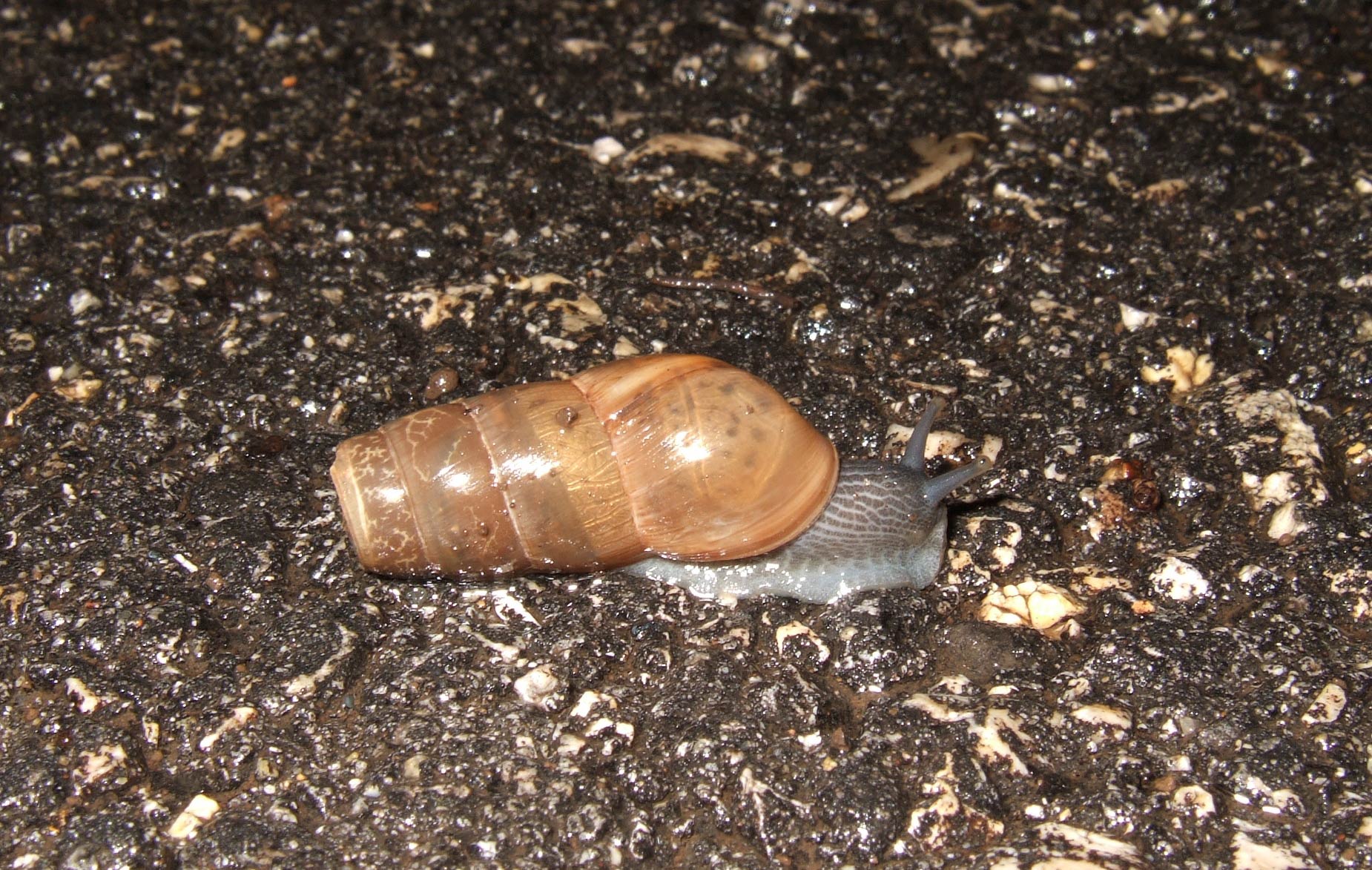Rumina decollata
Family
Subulinidae
Species
Rumina decollata (Linnaeus, 1758)
Common name
Decollate Decollate:
This term is used to describe shells without an apex.
snail
Description
The shellShell:
A hard, inflexible, calcareous or chitinous structure that vary in size and may either completely encasing the animal, covering some part of it or be internal.
of mature specimens can attain a maximum length of 45 mm and a widthWidth:
The width of the shell is the maximum distance across the shell (including the aperture).
of 14 mm. It is reasonably easy to detect mature specimens of this species, as they are characteristically "decollate Decollate:
This term is used to describe shells without an apex.
-shaped". Upon maturity, adult specimens intentionally break off the tip of the shellShell:
A hard, inflexible, calcareous or chitinous structure that vary in size and may either completely encasing the animal, covering some part of it or be internal.
, leaving it with a blunt end. There are generally 4-7 whorlsWhorls:
Pleural of whorl. A whorl is a complete spiral turn/growth of the shell of a mollusc. The whorls are counted from the apex outwards.
in adult specimens. An additional 3-4 whorlsWhorls:
Pleural of whorl. A whorl is a complete spiral turn/growth of the shell of a mollusc. The whorls are counted from the apex outwards.
may be observed in juveniles of this species.
Native range
Mediterranean region
Distribution
North America:
- U.S.: Arizona, California, Florida, Georgia, North Carolina, South Carolina, Texas
Central and South America: Mexico
Europe
Caribbean: Bermuda, Cuba
Other: Mediterranean Region
Ecology
The decollateDecollate:
This term is used to describe shells without an apex.
snail has been employed as biological control for pestiferous snail and slugs for many years. This species will rarely consume plant material. This generalist predator will feed indiscriminately and has been implicated in the decimation of native gastropods (including non-pest species) and beneficial annelids. Sexual maturity occurs at approximately 10 months. Each adult is capable of laying 500 eggs throughout its lifetime. The eggs are deposited singly in the soil and will hatch between 10-45 days.
Synonyms
- Bulimus decollatus Draparnaud, 1805
- Helix decollata Linnaeus, 1758
- Orbitina incomparabilis Germain, 1930
- Orbitana truncatella (Germain, 1930)
References
Abbott 1989Abbott 1989:
Abbott, R.T. 1989. Compendium of landshells. A full-color guide to more than 2,000 of the World’s terrestrial shells. American Malacologists, Inc., Melbourne, FL and Burlington, MA. pp. 240.; Anderson 2005Anderson 2005:
Anderson, R. 2005. An annotated list of the non-marine Mollusca of Britain and Ireland. Journal of Conchology 38: 607-637.; Burch 1962Burch 1962:
Burch, J.B. 1962. How to know the eastern land snails: pictured keys for determining the land snails of the United States occurring east of the Rocky Mountains Divide. Dubuque, Iowa: William C. Brown Company.


